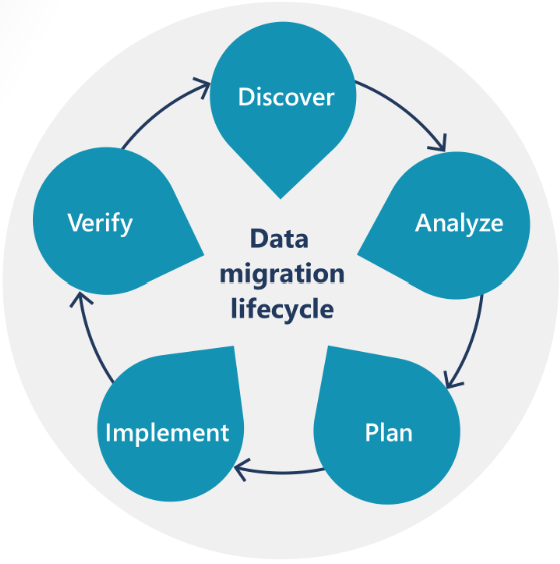Migration from Legacy systems to Dynamics 365


Migration Services
Migration from Legacy systems to Dynamics 365
To prepare your Dynamics 365 solution for a successful go-live, it's crucial to initiate data import preparations once you've grasped your business requirements and established robust data governance. Commence data import preparations for your Dynamics 365 solution in readiness for a successful go-live. This should follow a solid comprehension of your business requirements and the establishment of effective data governance.
There exist two key types of data to consider:
- Configuration data
- Migrated data
Handling these two data imports often poses the greatest challenge in Dynamics 365 implementations. Customers frequently underestimate the effort required, leading to project complications later on. This article addresses various subjects, including:
- Configuration plans
- Data migration plans
- Managing diverse environments
- Identifying data sources
- ETL (Extract, Transform, Load) or ELT (Extract, Load, Transform) processes
- Allocating competent resources for these endeavors
Configuration data encompasses setups necessary to ready your production environment for operational use, such as currencies and tax codes. Besides importing core data like customers and products, ongoing management of configurations remains essential throughout the implementation lifecycle. Understanding business requirements aids in defining the setups and parameters essential for enabling required business processes.
Migrated data, the second type, involves transferring data from one model to another, crucial for Dynamics 365. This data might stem from another business application or disparate Excel spreadsheets, serving as valuable information for running your business.
Planning for migration involves critical considerations:
- Ensuring relevant data is available during deployment
- Managing the timeline of data migration activities in the project plan
- Defining a migration strategy encompassing scope, timelines, and tools
- Identifying diverse data sources, data mapping, and data volumes
- Properly sizing import and staging databases
- Executing systematic data mapping and utilizing suitable ETL tooling
- Allocating the right resources familiar with data and Dynamics 365 tools
Roles and responsibilities within the project team should include individuals well-versed in data and Dynamics 365 tools to ensure smooth execution.
Key responsibilities encompass identifying data sources, mapping data, and handling ETL processes effectively.


